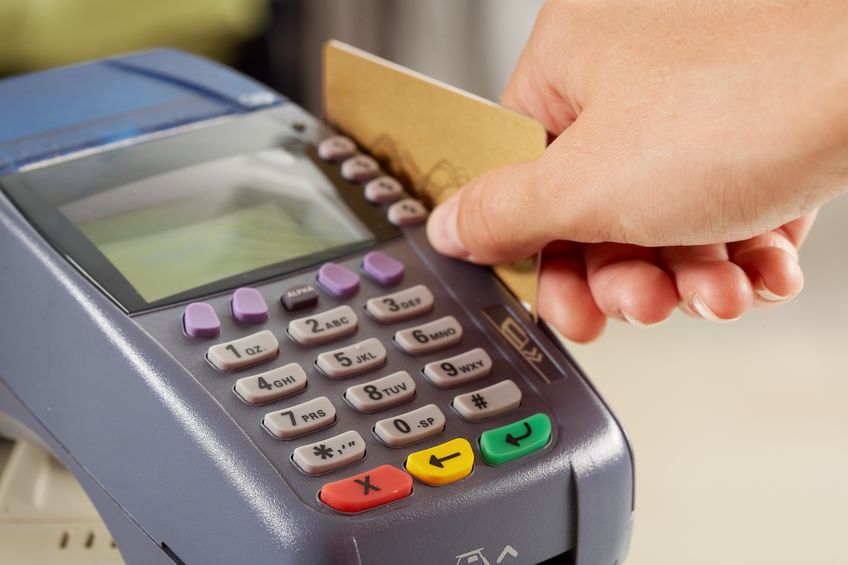Clover GO vs. Square – Which is Better for You?
Square is almost synonymous with phone-based mobile payment processing, but Clover – a company owned by processing giant First Data – has been carving out their own chunk of the market and making a name for themselves with availability in retail settings like Sam’s Club. Each company offers a small card reader designed to integrate with all iOS and Android smartphones, and while the hardware is incredibly similar, there are enough differences in the software and fee structures to make doing a little research well worthwhile before choosing one over the other. Below we provide a quick analysis of where each option shines, where the two companies fall short, and which option wins out in the end.
Clover Go Features:
Clover Go offers mobile processing for contactless payments, chip and swipe payments, and various third-party wallets like Google Pay, Apple Pay, and Samsung Pay. It is completely wireless, synching up with the Clover app on the user’s phone to enable management of all aspects of the payment process. The Clover Go also integrates seamlessly with Clover’s web dashboard and other hardware solutions, like Clover’s Mini and Flex.
Clover’s mobile app offers unlimited users, and standard features include customizable settings for taxes, tips, and pricing; email or SMS receipts, a library of available items, inventory management, multiple refund options, and integration with other Clover hardware for reporting purposes. While the feature set available is enough for many small-time merchants looking to make payments on the go, there are certain features Clover offers that don’t work with the Go hardware, which is slightly disappointing.
Square POS Features:
The Square reader is iconic, and Square has been the leader in small mobile-payment hardware for a long time. Like the Go, Square’s reader is wireless and enables payments to be processed from a contactless, chip, and swipe cards, as well as Apple Pay and Google Pay. Square also offers a magstripe-only reader completely free of charge for users looking to zero-out their hardware costs, although the utility of such a reader in today’s digital payment ecosystem is debatable.
Unlike Clover Go, Square’s mobile POS software does not set any limitations based on the type of Square hardware it’s being integrated with. The Square POS is packed with features, including all of the standard features you’ll find with the Clover’s software, but with added depth in areas like inventory management and in-app stock addition, configurable discounts by percentage and dollar value, variable price points, and more.
Fee Comparison:
The Clover Go hardware is $59 – a very reasonable sum for a capable card reader. On the software side, Clover offers two plans: Register and Register Lite. Register carries a monthly fee of $29US per month, 2.3% + $0.10 for card-present transactions, and 3.5% + $0.10 for keyed-in transactions. Register Lite is $14US per month with transaction fees of 2.7% + $0.10 for card-present transactions and 3.5% + $0.10 for keyed-in transactions.
Square’s full-featured reader is also $59 – unsurprising considering how similar the two units are. Square’s base-level POS software is free, with optional add-on bundles for retail and restaurant-specific upgrades running $60/month. For card-present payments, Square charges 2.65% per credit card and a $0.10 flat fee for Interac payments. For card-not-present payments, Square charges 3.4% + $0.15 for manually keyed-in transactions, and 2.9% + $0.30 for eCommerce and Square Invoice transactions.
Which Option is Better?
Merchants looking for a more full-featured POS software will get more bang for their buck out of Square POS, especially if they’re using the free version. Upgrading to the Retail or Restaurant add-ons incurs a pretty significant monthly fee, but the additional features unlocked are likely worth the cost. From a transaction fee standpoint, Square’s lack of a flat fee on credit card transactions makes it a better choice for merchants selling low-ticket items, where even losing ten cents per sale can make a difference. But once transaction values begin to rise, the lower percentage fee charged by Clover makes it the more attractive of the two options, even with the $14 or $29 per month fees.
It’s worth noting, however, that the fees charged by both companies are quite high. One alternative option that would benefit most full-time merchants doing higher sales values is to skip both Square and Clover and instead sign-up for a traditional merchant account. There are a few more hoops to jump through, but the lower transaction fees merchants can expect to make the sign-up process more than worthwhile. That’s especially true with merchant services providers like BAMS who use interchange-plus pricing – the only model that accurately reflects the interchange rates on various credit cards and ensures merchants aren’t overcharged on low-cost transactions.
For more information on BAMS’ merchant account and hardware options, our interchange-plus pricing model, and our industry-leading features and programs, visit BAMS.com today. Sign up for our unique five step price comparison to find out, line by line, exactly where BAMS can save you money on your merchant services bill every month.




